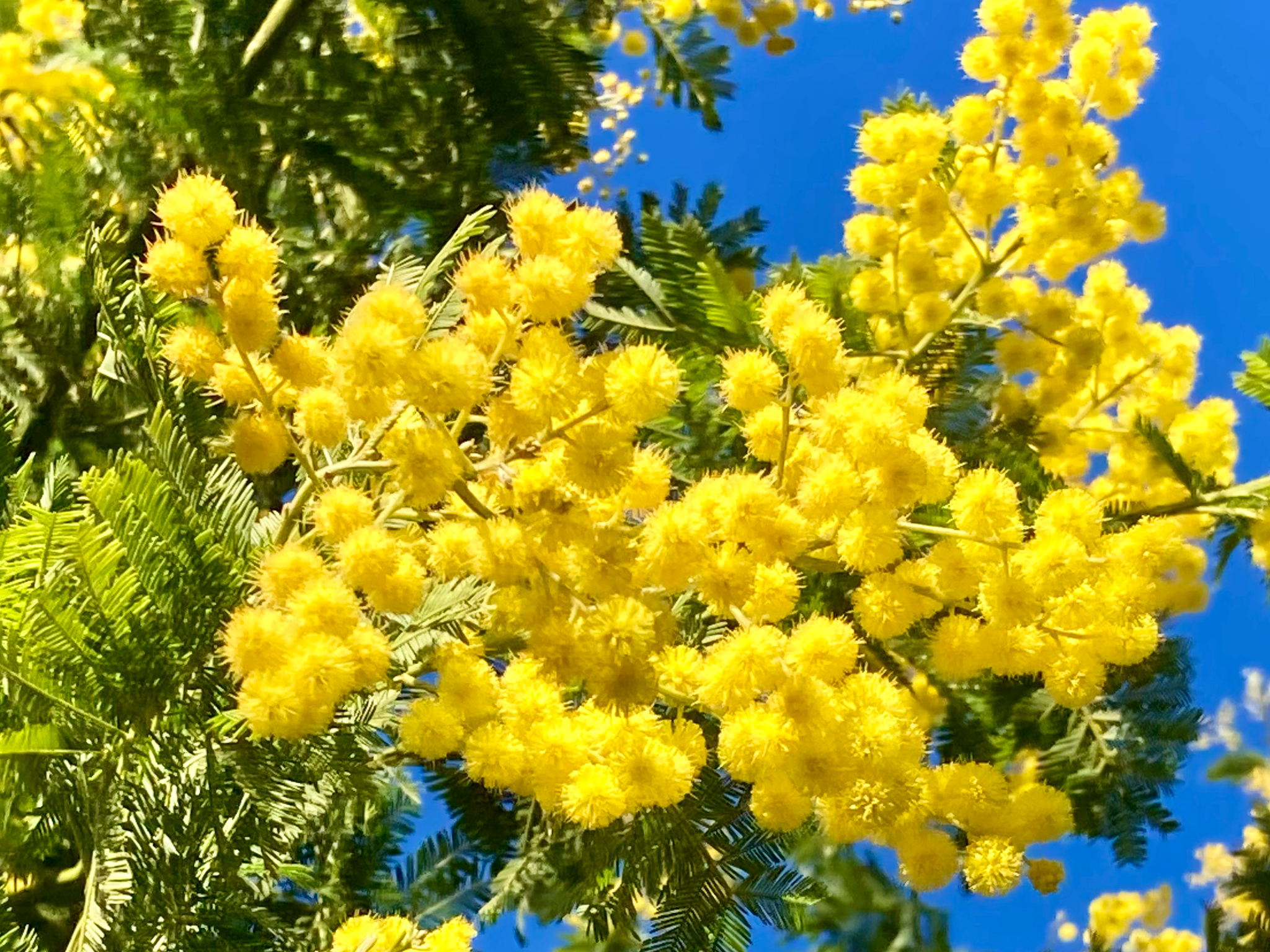Acacia dealbata
In 2008 the Royal Horticultural Society published ‘Opportunities for Gardeners’, a list of semi-hardy plants which it predicted would become more successful in the UK as the climate became warmer. One of these was Acacia dealbata, the silver wattle or mimosa, and here in the Mediterranean Climate Garden (Area L on the downloadable map) we have a lovely specimen with masses of clustered yellow flowers covered in stamens. A good foil for these is the very fine, feathery, evergreen foliage. As well as being sensitive to prolonged hard frosts, the tree is prone to blow over (as the one here did) but soon sends up fast growing new stems, bright green when young, now forming a tall shrub.
A. dealbata, one of nearly a thousand species of acacia in the Leguminosae family, originates in S.E. Australia and Tasmania, where it is a pioneer species after bushfires, and is now naturalised in many parts of the world with a Mediterranean climate, including the south of France from where the fragrant mimosa flowers have traditionally been sent for floristry in the UK.
The tree was first introduced to the UK in 1820. It holds the RHS Award of Garden Merit.


